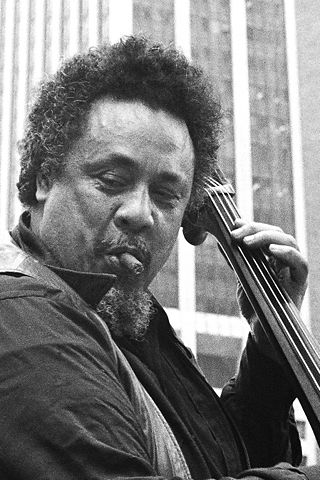
Charles Mingus Jr. was an American jazz upright bassist, pianist, composer, bandleader, and author. A major proponent of collective improvisation, he is considered to be one of the greatest jazz musicians and composers in history, with a career spanning three decades and collaborations with other jazz musicians such as Louis Armstrong, Duke Ellington, Charlie Parker, Dizzy Gillespie, and Herbie Hancock.

Charles Parker Jr., nicknamed "Bird" or "Yardbird", was an American jazz saxophonist, band leader and composer. Parker was a highly influential soloist and leading figure in the development of bebop, a form of jazz characterized by fast tempos, virtuosic technique, and advanced harmonies. Parker was an extremely brilliant virtuoso and introduced revolutionary rhythmic and harmonic ideas into jazz, including rapid passing chords, new variants of altered chords, and chord substitutions. Primarily a player of the alto saxophone, Parker's tone ranged from clean and penetrating to sweet and somber.

Shadows is a 1959 American independent drama film directed by John Cassavetes about race relations during the Beat Generation years in New York City. The film stars Ben Carruthers, Lelia Goldoni, and Hugh Hurd as three black siblings, though only one of them is dark-skinned enough to be considered African American. The film was initially shot in 1957 and shown in 1958, but a poor reception prompted Cassavetes to rework it in 1959. Promoted as a completely improvisational film, it was intensively rehearsed in 1957, and in 1959 it was fully scripted.
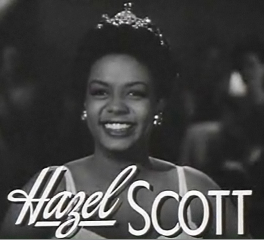
Hazel Dorothy Scott was a Trinidad-born American jazz and classical pianist and singer. She was an outspoken critic of racial discrimination and segregation. She used her influence to improve the representation of Black Americans in film.
Walter Norris was an American pianist and composer.
Nathan Irving Hentoff was an American historian, novelist, jazz and country music critic, and syndicated columnist for United Media. Hentoff was a columnist for The Village Voice from 1958 to 2009. Following his departure from The Village Voice, Hentoff became a senior fellow at the Cato Institute and continued writing his music column for The Wall Street Journal, which published his works until his death. He often wrote on First Amendment issues, vigorously defending the freedom of the press.

James Minter Knepper was an American jazz trombonist. In addition to his own recordings as leader, Knepper performed and recorded with Charlie Barnet, Woody Herman, Claude Thornhill, Stan Kenton, Benny Goodman, Gil Evans, Thad Jones and Mel Lewis, Toshiko Akiyoshi and Lew Tabackin, and, most famously, Charles Mingus in the late 1950s and early 1960s. Knepper died in 2003 of complications of Parkinson's disease.

Charles Edward Haden was an American jazz double bass player, bandleader, composer and educator whose career spanned more than 50 years. In the late 1950s, he was an original member of the ground-breaking Ornette Coleman Quartet.

John Arthur "Jaki" Byard was an American jazz multi-instrumentalist, composer, and arranger. Mainly a pianist, he also played tenor and alto saxophones, among several other instruments. He was known for his eclectic style, incorporating everything from ragtime and stride to free jazz.

Attilio Joseph "Teo" Macero was an American jazz saxophonist, composer, and record producer. He was a producer at Columbia Records for twenty years. Macero produced Miles Davis' Bitches Brew, and Dave Brubeck's Time Out, two of the best-selling and most influential jazz albums of all time. Although the extent of his role has been disputed, he also has been associated with the production of Davis' 1959 album Kind of Blue, jazz's best-selling record. Macero was known for his innovative use of editing and tape manipulation unprecedented in jazz and proving influential on subsequent fusion, experimental rock, electronica, post-punk, no wave, and acid jazz.
Robert Franklin Palmer Jr. was an American writer, musicologist, clarinetist, saxophonist, and blues producer. He is best known for his books, including Deep Blues; his music journalism for The New York Times and Rolling Stone magazine; his work producing blues recordings and the soundtrack of the film Deep Blues; and his clarinet playing in the 1960s band the Insect Trust. A collection of his writings, Blues & Chaos: The Music Writing of Robert Palmer, edited by Anthony DeCurtis, was published by Simon & Schuster on November 10, 2009.

Lester Willis Young, nicknamed "Pres" or "Prez", was an American jazz tenor saxophonist and occasional clarinetist.
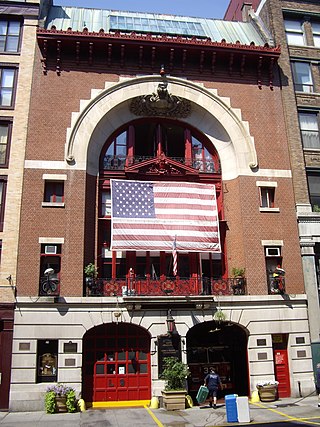
Great Jones Street is a street in New York City's NoHo district in Manhattan, essentially another name for 3rd Street between Broadway and the Bowery.

Carmine Ugo Mariano was an American jazz saxophonist who focused on the alto and soprano saxophone. He occasionally performed and recorded on flute and nadaswaram as well.
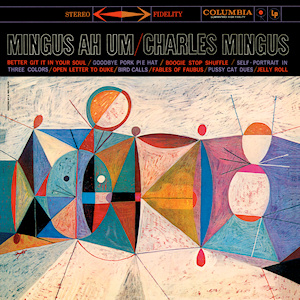
Mingus Ah Um is a studio album by American jazz musician Charles Mingus which was released in October 1959 by Columbia Records. It was his first album recorded for Columbia. The cover features a painting by S. Neil Fujita. The title is a corruption of an imaginary Latin declension. It is common for Latin students to memorize Latin adjectives by first saying the masculine nominative, then the feminine nominative, and finally the neuter nominative singular —implying a transformation of his name, Mingus, Minga, Mingum. The album was inducted into the Grammy Hall of Fame in 2013.

Jazz at Massey Hall is a live jazz album featuring a performance by "The Quintet" given on 15 May 1953 at Massey Hall in Toronto, Ontario, Canada. The quintet was composed of five leading 'modern' players of the day: Dizzy Gillespie, Charlie Parker, Bud Powell, Charles Mingus, and Max Roach. It was the only time that the five musicians recorded together as a unit, and it was the last recorded meeting of Parker and Gillespie.

William Marcel "Buddy" Collette was an American jazz flutist, saxophonist, and clarinetist. He was a founding member of the Chico Hamilton Quintet.
Tom Dowd & the Language of Music is a documentary profiling the life and work of music producer/recording engineer Tom Dowd. Historical footage, vintage photographs and interviews with a "who's who" list of musical giants from the worlds of jazz, soul and classic rock provide insight into the life of Dowd, whose creative spirit and passion for innovative technology helped shape the course of modern music. It was a 2005 Grammy Award nominee.
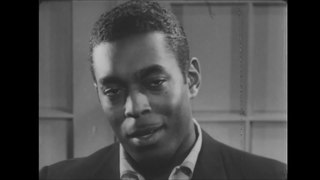
The Cry of Jazz is a 1959 documentary film by Edward O. Bland that connects jazz to African American history. It uses footage of Chicago's black neighborhoods, performances by Sun Ra, John Gilmore, and Julian Priester and the music of Sun Ra and Paul Severson interspersed with scenes of musicians and intellectuals, both black and white, conversing at a jazz club. It has been credited as being an early example of the Black pride movement and with predicting the urban riots of the 1960s and 1970s, and has been called the first hip-hop film. In 2010, this film was selected for preservation in the United States National Film Registry by the Library of Congress as being "culturally, historically, or aesthetically significant". The Library of Congress had this to say of the film and its significance:
Cry of Jazz...is now recognized as an early and influential example of African-American independent filmmaking. Director Ed Bland, with the help of more than 60 volunteer crew members, intercuts scenes of life in Chicago’s black neighborhoods with interviews of interracial artists and intellectuals. Cry of Jazz argues that black life in America shares a structural identity with jazz music. With performance clips by the jazz composer, bandleader and pianist Sun Ra and his Arkestra, the film demonstrates the unifying tension between rehearsed and improvised jazz. Cry of Jazz is a historic and fascinating film that comments on racism and the appropriation of jazz by those who fail to understand its artistic and cultural origins.

Charles Mingus: Triumph of the Underdog is a 1997 documentary film about the life of jazz musician Charles Mingus.















